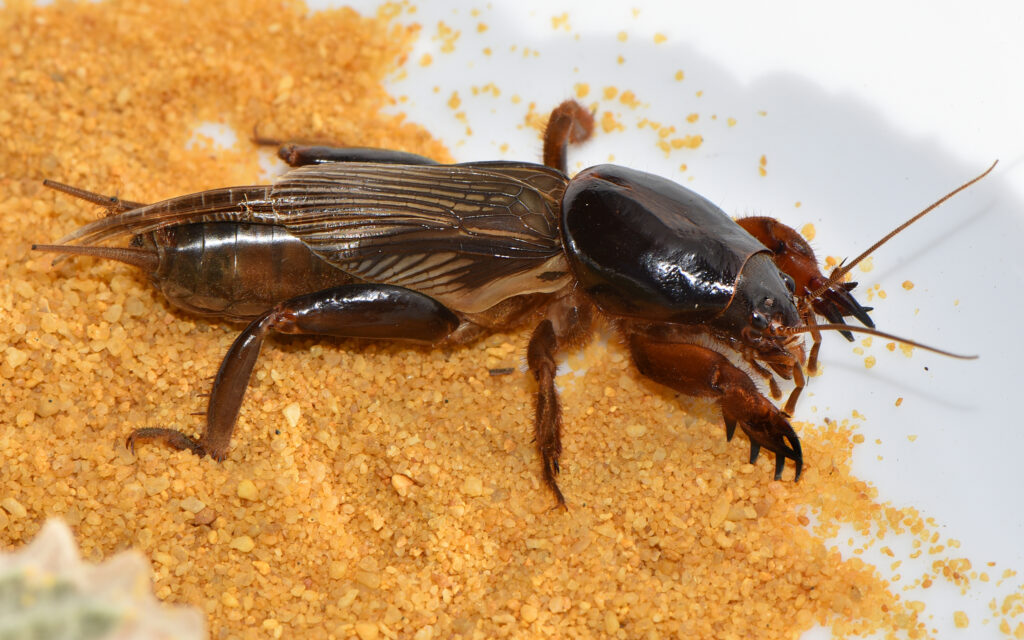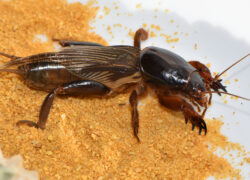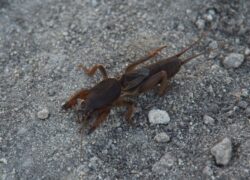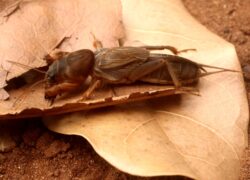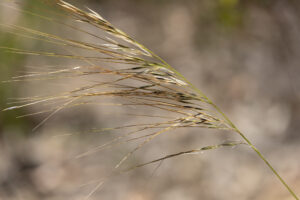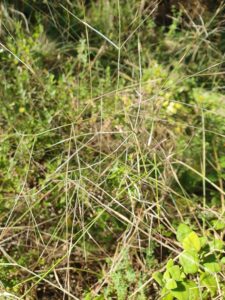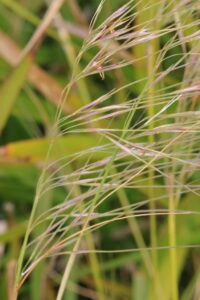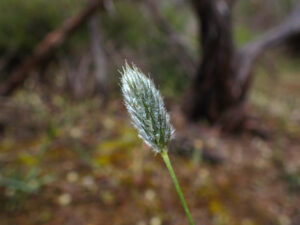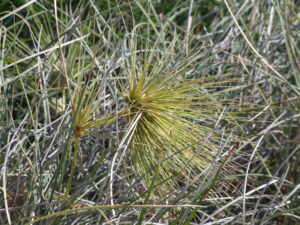Mole Crickets
These bizarre looking insects are incorrectly called Sandgropers and their calls are mistaken for frogs.
Suburbs Alexander Heights Alfred Cove Alkimos Anketell Applecross Ardross Armadale Ascot Ashby Ashendon Ashfield Attadale Atwell Aubin Grove Aveley Avon Valley National Park Bailup Bakers Hill Balcatta Baldivis Balga Ballajura Bambun Banjup Banksia Grove Baskerville Bassendean Bateman Bayswater Beaconsfield Beckenham Bedford Bedfordale Beechboro Beechina Beeliar Beldon Belhus Bellevue Belmont Bennett Springs Bentley Bertram Bibra Lake Bickley Bicton Bindoon Bindoon Training Area Boonanarring Booragoon Boya Brabham Breera Brentwood Brigadoon Brookdale Bull Creek Bullsbrook Burns Beach Burswood Butler Byford Calista Camillo Canning Mills Canning Vale Cannington Carabooda Carine Carlisle Carmel Carramar Casuarina Caversham Champion Lakes Chidlow Chittering Churchlands City Beach Claremont Clarkson Cloverdale Cockburn Central Como Connolly Coodanup Coogee Coolbellup Coolbinia Cooloongup Copley Cottesloe Craigie Crawley Cullacabardee Cullalla Currambine Daglish Dale Dalkeith Darch Darling Downs Darlington Dayton Dianella Doubleview Dudley Park Duncraig East Cannington East Fremantle East Perth East Rockingham East Victoria Park Eden Hill Edgewater Eglinton Ellenbrook Embleton Ferndale Flint Floreat Flynn Forrestdale Forrestfield Fremantle Gidgegannup Girrawheen Glen Forrest Glendalough Gnangara Golden Bay Gooseberry Hill Gorrie Gosnells Greenfields Greenmount Greenwood Guildford Gwelup Hacketts Gully Hamersley Hamilton Hill Hammond Park Harrisdale Haynes Hazelmere Heathridge Helena Valley Henderson Henley Brook Herdsman Herne Hill High Wycombe Highgate Hilbert Hillarys Hillman Hilton Hocking Hope Valley Hovea Huntingdale Iluka Inglewood Inkpen Innaloo Jandabup Jandakot Jane Brook Jarrahdale Jindalee Jolimont Joondalup Joondanna Julimar Kalamunda Kallaroo Karawara Kardinya Karnup Karragullen Karrakatta Karrakup Karrinyup Kelmscott Kensington Kenwick Keralup Kewdale Kiara Kings Park Kingsley Kinross Koondoola Koongamia Kwinana Beach Kwinana Town Centre Lake Coogee Lakelands Landsdale Langford Lathlain Leda Leederville Leeming Lennard Brook Lesley Lesmurdie Lexia Lockridge Lower Chittering Lynwood Maddington Madeley Madora Bay Mahogany Creek Maida Vale Malaga Malmalling Mandogalup Mandurah Manning Marangaroo Mariginiup Marmion Martin Maylands Meadow Springs Medina Melaleuca Melville Menora Merriwa Middle Swan Midland Midvale Millendon Mindarie Mindarra Mirrabooka Mogumber Mooliabeenee Moondah Moondyne Morangup Morley Mosman Park Mount Claremont Mount Cooke Mount Hawthorn Mount Helena Mount Lawley Mount Nasura Mount Observation Mount Pleasant Mount Richon Muchea Mullaloo Mundaring Munster Murdoch Myaree Naval Base Nedlands Neerabup Nollamara Noranda North Bannister North Beach North Coogee North Fremantle North Lake North Perth Northbridge Nowergup O’Connor Oakford Ocean Reef Orange Grove Orelia Osborne Park Padbury Palmyra Parkerville Parklands Parkwood Parmelia Paulls Valley Pearsall Peppermint Grove Peron Perth Perth Airport Piara Waters Pickering Brook Piesse Brook Pinjar Port Kennedy Postans Queens Park Quinns Rocks Red Hill Redcliffe Reservoir Ridgewood Riverton Rivervale Rockingham Roleystone Rossmoyne Safety Bay Salter Point Samson San Remo Sawyers Valley Scarborough Secret Harbour Seville Grove Shelley Shenton Park Shoalwater Silver Sands Sinagra Singleton Sorrento South Fremantle South Guildford South Lake South Perth Southern River Spearwood St James Stirling Stoneville Stratton Subiaco Success Swan View Swanbourne Tamala Park Tapping The Lakes The Spectacles The Vines Thornlie Treeby Trigg Tuart Hill Two Rocks Upper Swan Victoria Park Viveash Waikiki Walliston Walyunga National Park Wandi Wangara Wannamal Wanneroo Warnbro Warwick Waterford Watermans Bay Wattle Grove Wattleup Wellard Welshpool Wembley Wembley Downs West Leederville West Perth West Swan Westminster White Gum Valley Whiteman Willagee Willetton Wilson Winthrop Woodbridge Woodlands Woodvale Wooroloo Woottating Wundowie Wungong Yanchep Yangebup Yarawindah Yeal Yokine Other invertebrates
Healthy Soils
Noongar Names: Not known
Scientific Name: Gryllotalpa spp.
Conservation Status: Least Concern
Threats: Habitat loss and predation by cats and foxes
Will they visit?: Mole crickets are common in home gardens
Natural Distribution: Common and widespread throughout the South West and Perth region
Gryllotalpa – Jean Hort (CC BY-NC 4.0)
Gryllotalpa australis – Erika Roper (CC BY-NC 4.0)
Gryllotalpa australis -geoffbyrne (CC BY-NC 4.0)
Habitat at a Glance
See Habitat Guide for more detail
Shelter: Underground and in leaflitter
Diet: Roots, fungi, decaying vegetation
Water: Damplands
ReWild Benefit: Improve soil health
Habitat Guide - Shelter
Natural Shelter
They spend their life in complex underground burrows. Residents can be confronted by the unusual appearance of a mole cricket and often incorrectly call them sandgroppers. A layer of mulch can keep the soil suitable for mole crickets as they prefer cool and damp areas.
Novel Shelter
Not required.
Habitat Guide - Food and Water
Providing natural sources of food
Mole crickets feed off roots, fungi, and decaying vegetation within and just above the soil. Most mainly feed on roots of native and exotic plants, including lawn. Plant a variety of native grasses, wattles, and ground covers to provide a variety of potential food sources.
Providing sources of water
Damp areas provide breeding habitat for mole crickets where they can lay eggs and raise their young.
ReWild Benefits
Most mole crickets seen in the urban environment are introduced species from the eastern states. There are some native species not yet formally described by science. Mole crickets do not seem to have a detrimental impact on gardens and may even help with soil health. If you do see a mole cricket, you can record your sighting on the Atlas of Living Australia !
0
false

